Focusing on the trend of circular use of resources and the development of new value chains
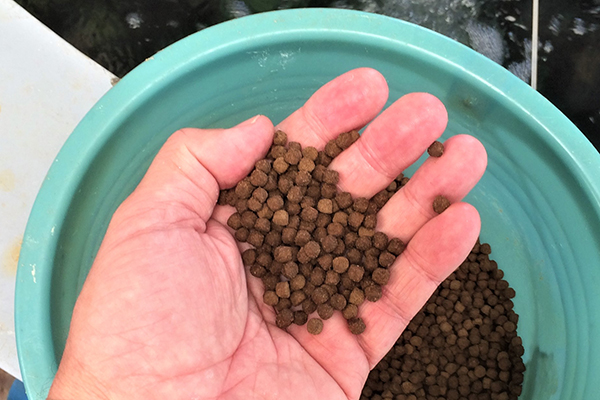
Aquaculture competes for crop resources with livestock and energy industries and direct human consumption, raising some concerns about the impact of aquatic farming on global food resilience, albeit representing only a small fraction of resources compared to other animal food production systems. Hence, there is still a need to find more economic and sustainable protein and lipid sources to underpin the increasing demands for aquafeed based on sustainably sourced ingredients.
When developing alternative or circular feed and aquaculture strategies, evaluation of these should be assessed through environmental, economic, social, legislative, technical and business criteria. Such assessment is necessary to evaluate the new products in relation to existing products and concepts and provides producers with relevant data and evaluation that can finalize the development of novel circular strategies.
This article – adapted and summarized from the original publication (Eroldoğan, O.T. et al. 2022. From the sea to aquafeed: A perspective overview. Rev Aquac. 2022;1–30) – presents a broad overview and provides a preliminary analysis of some of the potential marine resources that can be applied to the sustainable nutrient demand challenge by embracing the circular aquaculture bio-economy framework.
The authors examined a wide range of potential organisms and their use in novel aquafeeds, their potential mode of use and benefits, not only as alternative nutrient sources, but also as promoters of growth and health. They also offered a novel view on the circular aquaculture potential, and assess its two levels: the direct one, through the valorization of waste and the indirect one, through integrated multitrophic aquaculture (IMTA), emerging as a sustainable and circular alternative to traditional monoculture of aquatic species.
The original publication discusses in detail microorganisms such as microalgae, fungi and bacteria as single-cell ingredients; macroorganisms such as algae and invertebrates as aquaculture feeds; marine side streams (from industry/discard): a circular aquaculture perspective; and added value activities for novel aquafeeds. Readers interested in this detailed information should refer to the original publication.
Risk assessment of using marine organisms
Like all ingredients, any novel ingredients derived from marine origin also present the potential for introducing a range of risks. Managing these risks requires adopting a series of risk assessment strategies for which there are a systematic series of policies, procedures and practices can be applied. Risk assessment on scientific-based processes is generally represented as four stages: (i) hazard identification, (ii) hazard characterization, (iii) exposure assessment and finally (iv) risk characterization.
From this process, it can be noted that fundamental to the risk analysis process is the communication of the issues, and establishment of the risk context, followed by the identification, analysis, evaluation, treatment, monitoring and review of the identified risks (Fig. 1). Based on this series of approaches, the risk can be more clearly considered and assumptions and uncertainties about those risks can be evaluated in Codex Alimentarius Commission (CAC).
Logistical risks
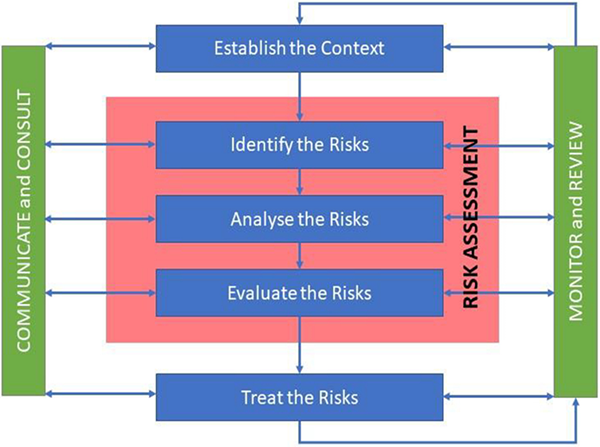
Applying any ingredient to feed brings with it a suite of production, safety and logistical risks. In feed production, different elements are associated with those risks that need to be considered. Feed production is a manufacturing process and there are always risks associated with producing a product to the required specifications. The abilities to formulate and produce feed based on data of any specific batch of ingredients and have the final composition of the combination of various ingredients meet the planned expectations have varying degrees of probability subject to the number of ingredients used, the confidence around safety and performance the parameters being assessed, and the fidelity of any analytical method used. Additionally, in this process of combining raw materials, there is also potential for those raw materials to bring in contaminants and pathogens.
Other critical logistical risks include the supply and price of the ingredients being considered. It is important to note that most feed production facilities have limited capacity for the number of (bulk) ingredients they can use. Because of this, there is a preference to use ingredients that can be reliably obtained at large volumes and consistent supply. The ability to obtain ingredients on such a basis significantly decreases the risk associated with the reliable production of feeds. However, this does not preclude the use of low-volume and/or novel ingredients. Still, there is a critical need to scale through various technology readiness levels (TRLs in Fig. 2) to meet this requirement and reduce logistical risk when introducing new ingredients.
In addition, the logistical risks are accompanied by the price. Various economic factors influence the price of any ingredient and its utility in the feed sector. While it may be possible to produce an ingredient from arguably anything, this does not necessarily mean it can be done in the most cost-competitive manner. The cost efficiency includes a range of considerations: the cost of production, the qualities the ingredient contributes (e.g., compositional, sensory and structure) and the perceived value of the product by the buyer, the willingness to pay and the fact that the price will be consistently iterated to respond to market forces and competition. Therefore, the risk associated with cost viability may also change over time.
Biological risks
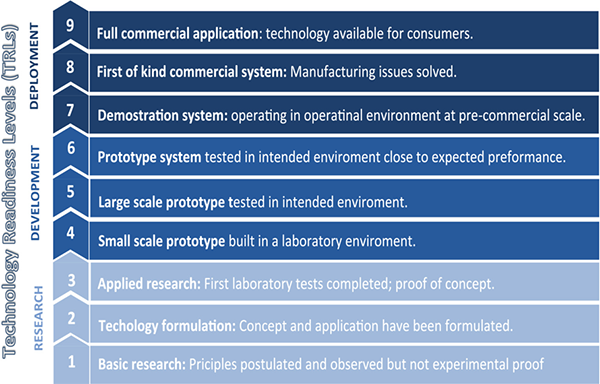
Regarding biological risks, the primary ones likely to be encountered in the application of different marine ingredients include issues with the variability in nutrient supply, the potential for the presence of contaminants and the presence of anti-nutritional factors (ANFs). Several groups of ANFs have a potentially harmful compound and it is thus important to have sufficient information about the presence of ANFs in new aquafeed sources. These ANFs should be reduced or removed using appropriate physical or chemical methods to prevent the biological risk to animal health, welfare, and growth performance so that the safety of the final product is guaranteed.
The ability to ascribe values to various compositional parameters and the variability in their nutritional effects is critical to determine the nutritional value of any ingredient. As such, this process must commence with a characterization of the ingredient (e.g., what is it and what is its composition) followed by an assessment of its palatability and digestibility. Once an ingredient has been characterized and its palatability and digestibility constraints defined, its appropriate application in a diet formulation can be considered in any subsequent growth study. When any of these foundational steps are omitted, there can be a critical feed failure due to poor intake and/or incorrect nutrient supply, both of which can be effectively managed if known prior.
Problems with variability in nutrient supply can be managed through the processes of characterization of the ingredient followed by both palatability and digestibility assessment. However, in practice, the palatability and digestibility of each batch of ingredients are seldom appropriately assessed, although it is common practice in the feed industry to undertake the characterization step of the ingredient for each batch based on an assessment of the composition, usually using modern near-infrared spectroscopy (NIR) techniques. In contrast, it is more common to apply “trade knowledge” to the palatability information requirement, and “book values” or database values to the digestibility information requirement. However, the industry is increasing its capability to adapt NIR to predict nutrient digestibility in both feeds and ingredients.
Contaminants present a significant risk in using of marine ingredients as many persistent pollutants accumulate in marine ecosystems from terrestrial run-offs. Various contaminants are known to exist but usually, there are either certain heavy metals or persistent organic pollutants (POPs). For a comprehensive review of the various potential contaminants affecting aquafeeds see Glencross et al. Notably, feed ingredients can also be contaminated during the production and processing stages. However, such contamination of an ingredient presents a significant risk to the animal to which it is being fed, and to the ultimate consumer of that animal that was fed.
Valorizing aquaculture waste into bio-fertilizers and pet feed
Bottlenecks and opportunities of sea-to-aquafeed
There is an increasing need to invest in research and development that will provide effective alternatives and new supply chains to replace fishmeal and fish oil. However, before any successful and scalable market introduction of novel feed formulations, several challenges need to be addressed by the industry to achieve sustainable and responsible practices. Collaboration and investment: The blue growth initiative – proposed in 2013 by FAO – aims to build resilience of coastal communities, and restore the productive potential of the ocean by promoting the sustainable management of aquatic resources.
To improve and boost the development of sustainable aquaculture, there is a need for international and transdisciplinary research and innovation collaborations. These collaborations are supported through investment by national and international funding agencies to transfer the developed technologies to the industry. The European Union provides many strategies and funding mechanisms that can boost and stimulate innovations within marine biotechnology and improve the aquaculture sector. A detailed presentation of the EU’s strategy and funding opportunities for marine biotechnology is presented in the review by Rotter et al.
To promote the development and commercialization of novel aquafeeds, a cross-sectorial and transnational collaboration is needed to create more efficient and financially supported networks along the new value and supply chains of seafood and aquaculture sectors. These involve research and development experts to cover the lower TRLs and develop/test the efficiency of extraction/small-scale production of novel aquafeeds, as well as representatives from the industry (e.g., commercial farms) for testing novel aquafeeds in an operational environment. Importantly, as the prototyping of novel aquafeeds advances through technology readiness, other expertise is necessary, such as legal, market research supply chain and potential customer feedback/market acceptance.
Sustainability
Research on the sustainability of alternative feed production should be tackled on four levels: (i) supply sustainability, (ii) environmental sustainability, (iii) economic sustainability and (iv) social sustainability. Supply chains must be examined to determine the network of entities and activities from primary alternative feed providers to feed producers, suppliers, distributors and finally to final users –aquafeed marketers and fish farmers. Strengths and weaknesses of each link have to be identified to propose management and mitigation strategies. Environmental sustainability is essential as aquaculture is markedly impacted by climate change effects, especially water shortage, and resource declines that impact the use of terrestrial feed ingredients.
Moreover, alternative feedstuffs are needed to counterbalance the unsustainable feed ingredients. Although some alternative feedstuffs hold a great promise to maintain the environmental sustainability of aquaculture, they still need to consider the release of waste by the fed organisms, the resultant nutrient loading in surrounding waters as a result of uneaten feed, bad feeding strategies or poor feed quality. Economic sustainability is needed that links innovation, market trends, consumer demand and consumer acceptance balanced with cost calculations.
Finally, social responsibility involves the responsibility from all stakeholders involved in the industry for application of good practices. These include the sharing of resources, knowledge, education and promoting the health and environmental benefits (especially as a result of a circular approach). It is important, however, to highlight the need of the assessment of circularity through environmental, economic, social, legislative, technical and business criteria and provide indicators to monitor the implementation and success of implemented novel aquafeeds as contributors to sustainable bioeconomy practices. These can produce indicators and impacts that can be used by all stakeholders, including the policymakers and the final consumers, to make decisions on further supporting the development and implementation of these circular practices.
Legal requirements
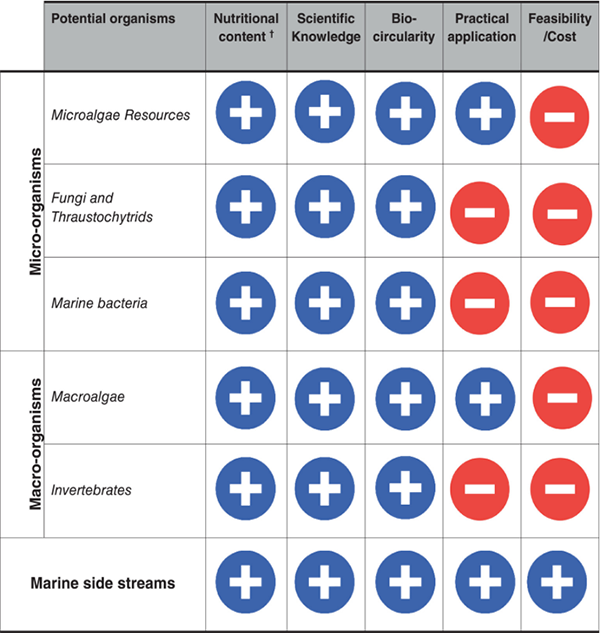
As one of the fastest growing industries within global food production sectors, increasing attention to legal requirements especially in developing new technologies and applications has been placed on the aquaculture sector. In the early 1990s, the United Nations provided The Convention on Biological Diversity, which represented a framework for countries to structure regulations and legislation on the access, use, exchange and benefit of genetic resources.
In the European Union, the pursue to find novel feed ingredients to build new sustainable food systems and the creation of alternative sustainable businesses and jobs is strategically included in the guidelines to build a more sustainable and competitive aquaculture by the year 2030. In the context of circular aquaculture, there is hence an increasing need to reinforce the dialogue between the policymakers and aquaculture specialists. This can, for example, incentivize a broader adoption of circular fish feed in countries that still do not legally authorize the adoption of alternative proteins for the aquaculture industry.
Perspectives
As in other industries, aquaculture is transitioning from linear to circular models, involving the valorization of a wide range of resources from the marine environment. These biological resources can be used as whole (either as a live feed or their biomass) or through the valorization of their bioactive compounds, including as effective alternative feedstuffs.
However, more research is needed to understand the production of bioactive compounds in organisms and their impact on target aquaculture species. It is also important to bear in mind that the greatest challenges to alternative protein sources derived from the marine sources in aquafeed include varied protein content, scientific knowledge, practical application in the industry, feasibility along with the biocircularity of these resources (Fig. 3).
Given these challenges, like all alternative ingredients, some of these potential organisms have critical scalability and cost points at where they compete. Thus, more effort should be put into transitioning to innovative aquaculture approaches using the same producer organisms that can economically complement the traditional fish sources for fishmeal and fish oil as a source of additional advantages. Putting further efforts into better understanding these micro- and macro-organisms, namely their contribution as value-added products and their capacity to improve animal performance, nutrient availability, food palatability and digestibility, could be part of the route to successfully integrating them as vital resources in aquaculture feeds.
Broader systems and sustainability values of various resources should be investigated in addition to the nutritional benefits associated with the consumption of marine organisms. An example is provided by the use of macroalgae and bacteria that are also effective at treating wastewater generated by aquaculture production, hence providing a win-win service for the aquaculture industry.
As many of these alternative feed resources are still under development but critically needed in the growing aquaculture sector, now is the right time for additional investment into collaborations that will drive the development of market-ready products with validated value to entire supply chains. In addition, close collaborations need to be maintained with the local, national and international legislation to design novel waste management strategies, invest in necessary infrastructures and raise awareness among the end users of products that have been developed respecting the circularity design principles.
Now that you've reached the end of the article ...
… please consider supporting GSA’s mission to advance responsible seafood practices through education, advocacy and third-party assurances. The Advocate aims to document the evolution of responsible seafood practices and share the expansive knowledge of our vast network of contributors.
By becoming a Global Seafood Alliance member, you’re ensuring that all of the pre-competitive work we do through member benefits, resources and events can continue. Individual membership costs just $50 a year.
Not a GSA member? Join us.
Author
-
Dr. Orhan Tufan Eroldoğan
Corresponding author
Orhan Tufan Eroldoğan, Faculty of Fisheries, Department of Aquaculture, Cukurova University, 01330 Adana, Turkey.
Related Posts
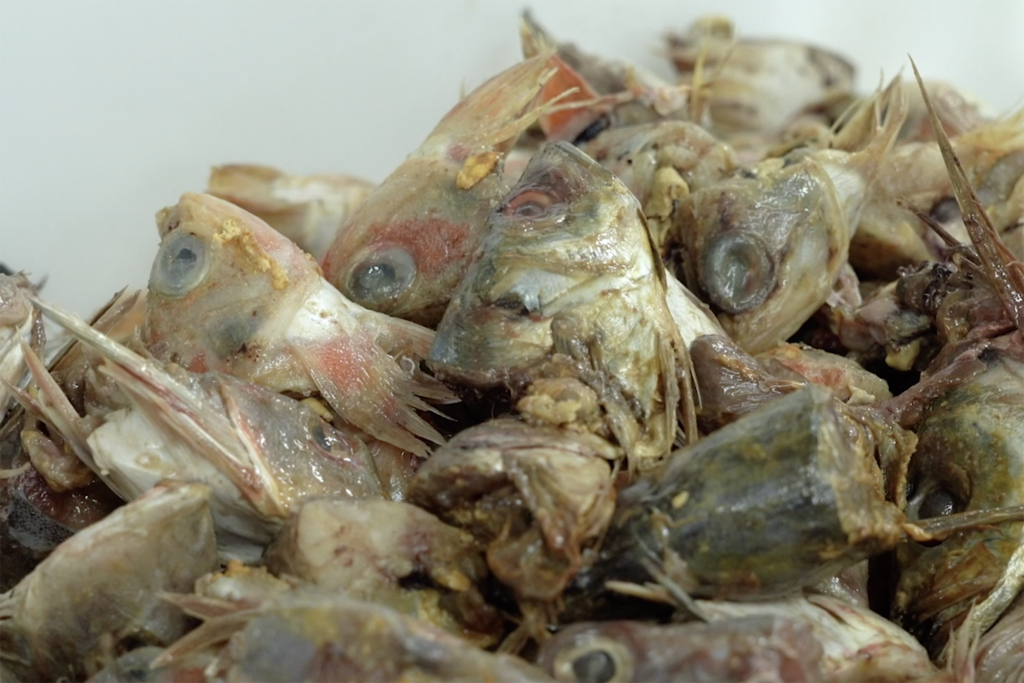
Responsibility
An introduction to circular economy principles in aquaculture
In the latest article from the GAIN project, implementing circular economy principles can help increase the sustainability of aquaculture production.
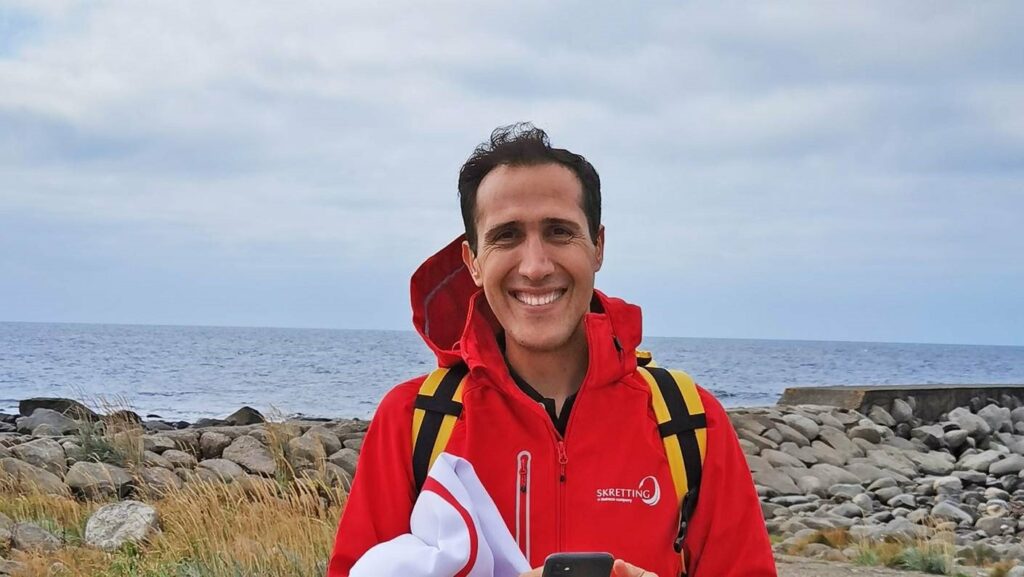
Responsibility
‘Do more and do better’ – Sustainability manager discusses Skretting’s ambitious agenda
Aquafeed giant Skretting recently appointed Jorge Diaz as its sustainability manager to advance its ambitious sustainability agenda.
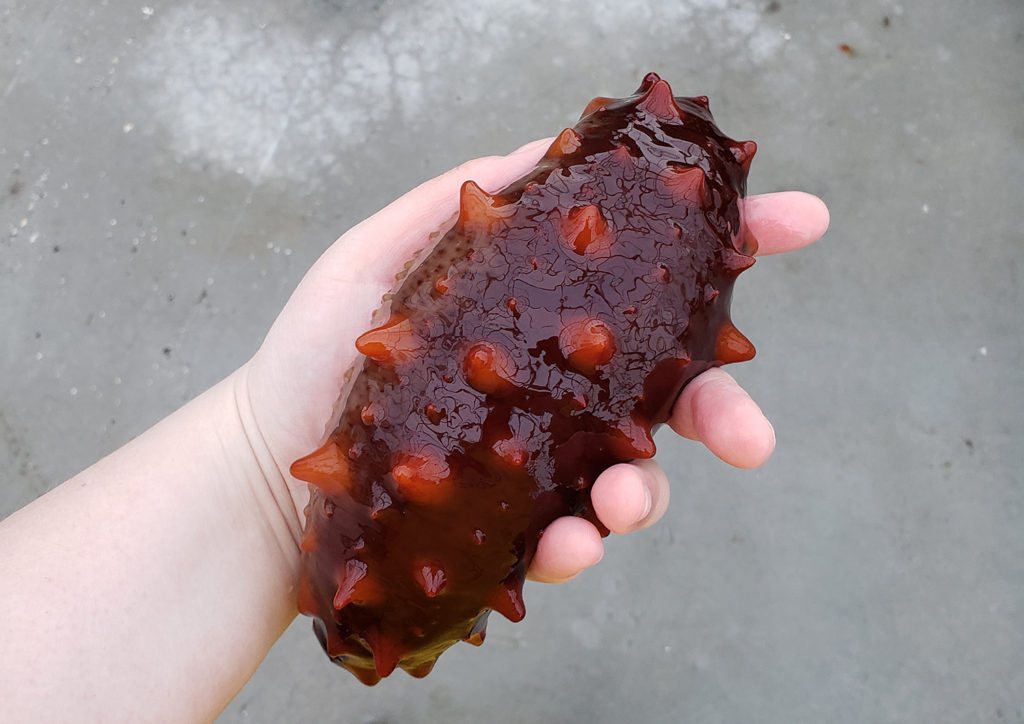
Responsibility
A fresh focus on sea cucumbers – nature’s recyclers
Researchers in Scotland, Sweden and Canada are exploring the potential of sea cucumbers, the squishy detritivores that can help clean up behind fish pens.
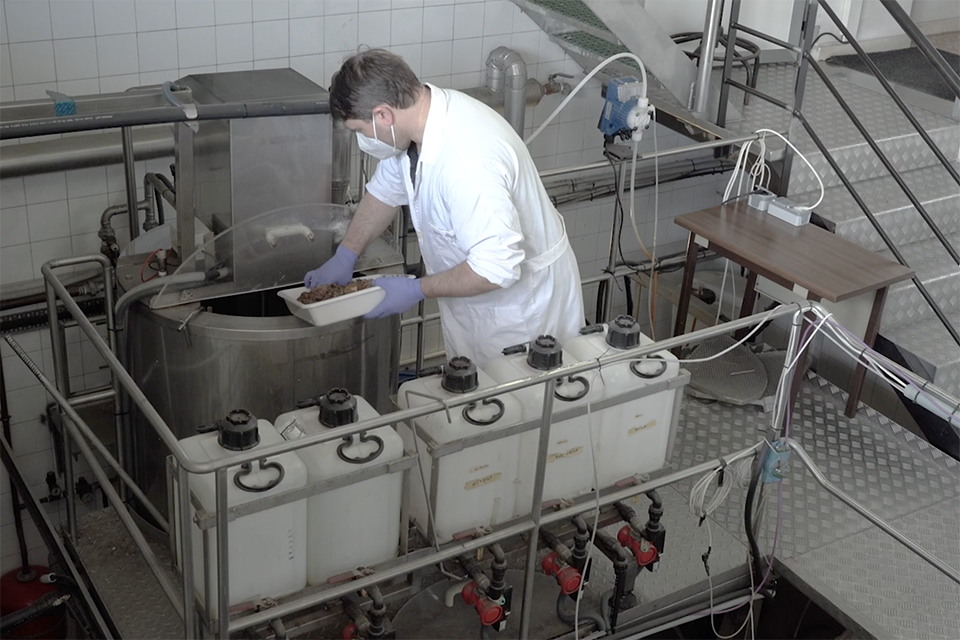
Responsibility
Circular economy: Hydrolysates of aquaculture byproducts as feed
In the latest GAIN article, fish scraps can be transformed into fish protein hydrolysates as a high-nutrient value addition to aquafeeds.



